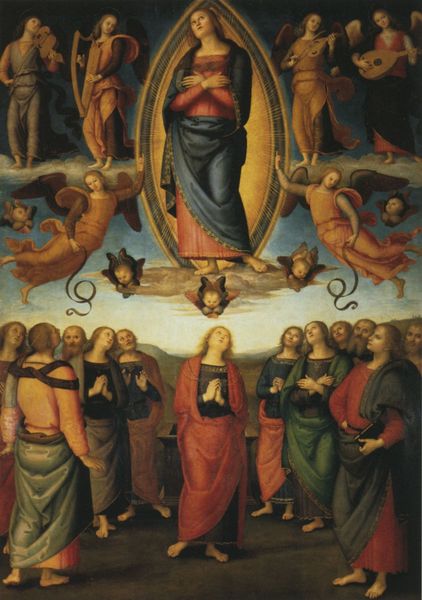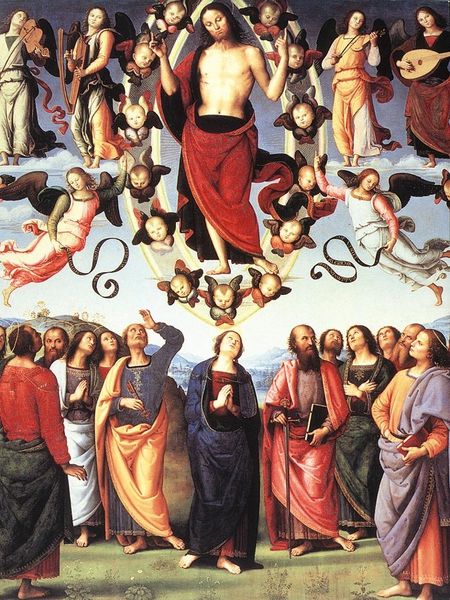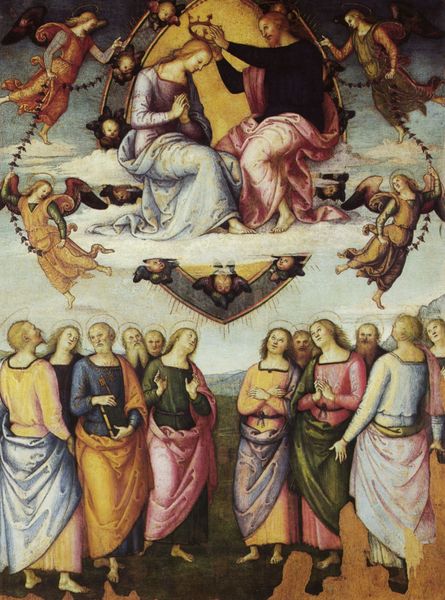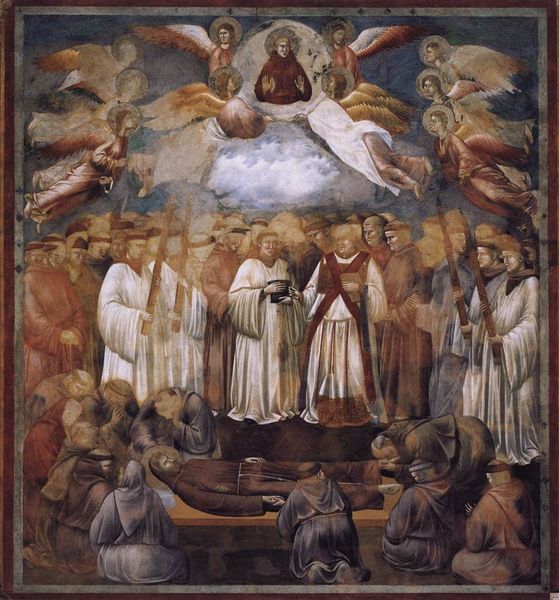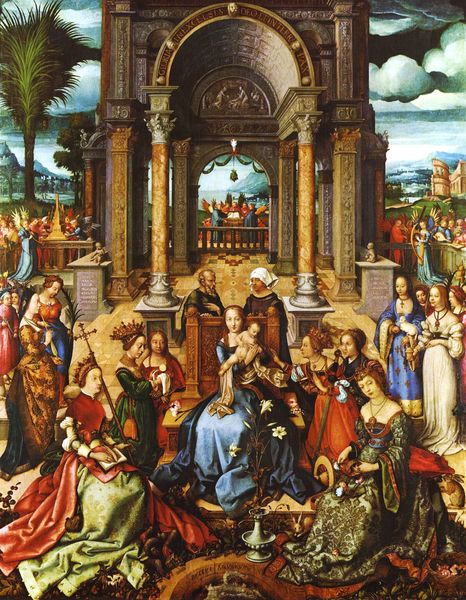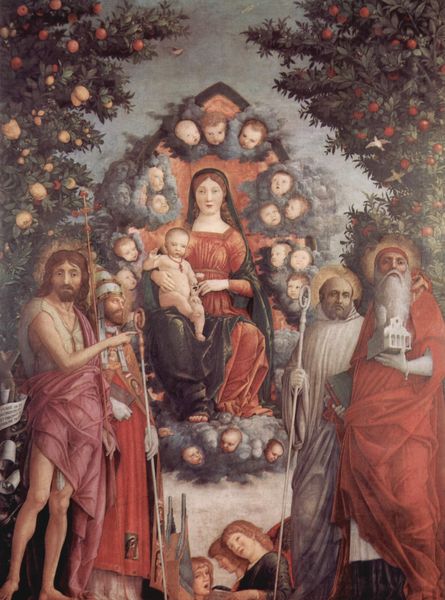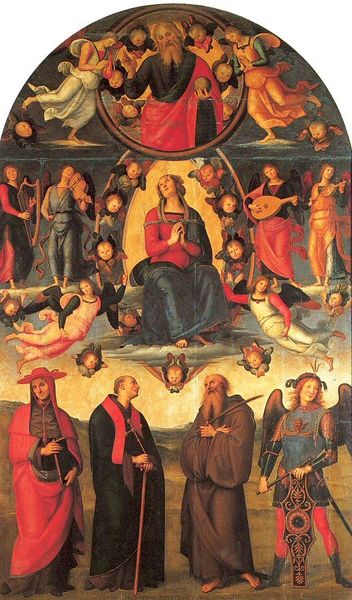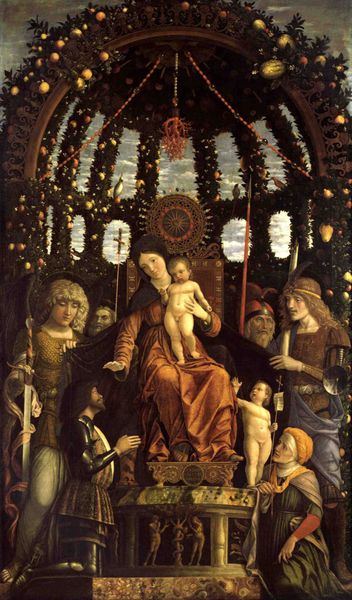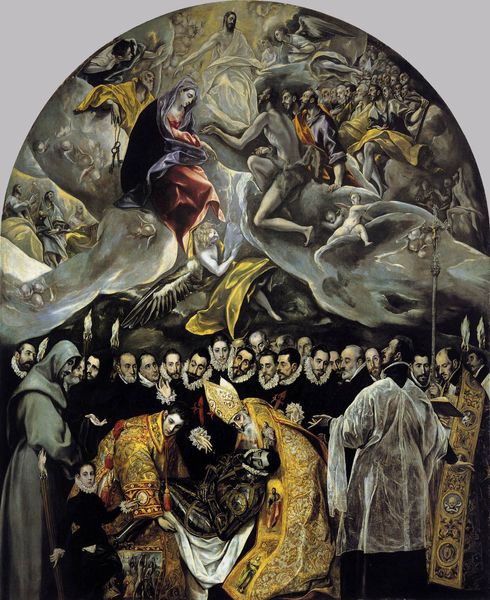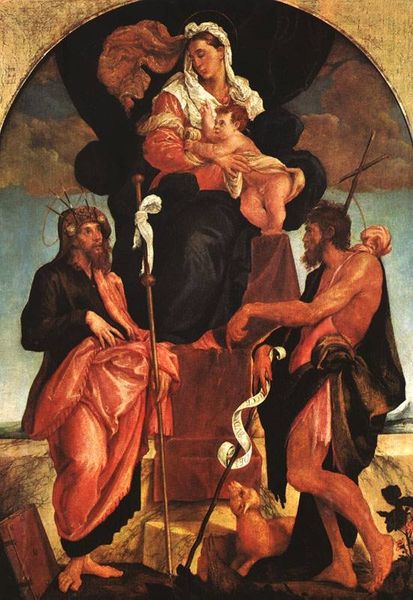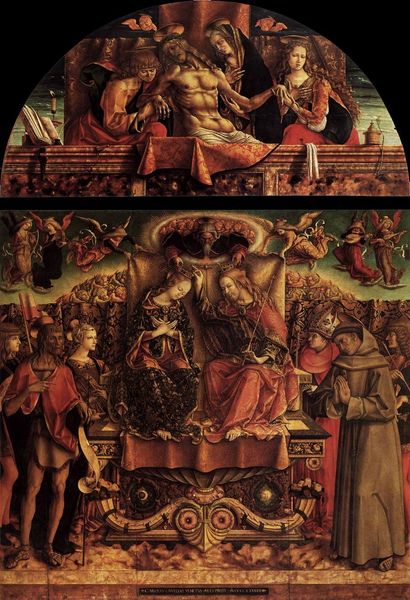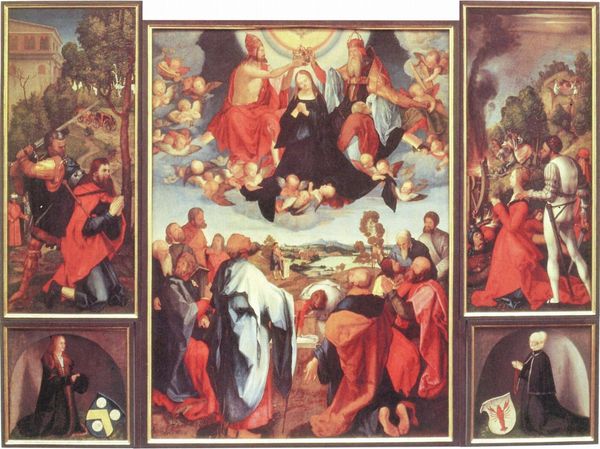
painting, oil-paint
#
portrait
#
painting
#
oil-paint
#
figuration
#
oil painting
#
christianity
#
history-painting
#
italian-renaissance
#
early-renaissance
Dimensions: 481 x 336 cm
Copyright: Public domain
Vittore Carpaccio painted this large canvas, Glorification of St. Ursula and her Companions, using oil paint, sometime in the late 15th or early 16th century. Oil paint is created by mixing pigment with a drying oil like linseed, walnut or poppy. The great advantage of this material, compared to earlier media like tempera, is that it dries slowly. This allowed Carpaccio to create subtle gradations of tone and light. Look closely, and you’ll see how he builds up the forms of the clouds and figures in delicate layers. The process of oil painting also allowed for corrections and reworkings – it’s not unusual to see the traces of earlier compositions beneath the final surface, when paintings are examined with X-rays. While the application of oil paint can be a very refined skill, requiring years of patient study, the materials themselves were increasingly available on a commercial basis at this time. Carpaccio and other painters like him were participating in a growing economy of artistic production, a far cry from earlier artisanal traditions.
Comments
No comments
Be the first to comment and join the conversation on the ultimate creative platform.
